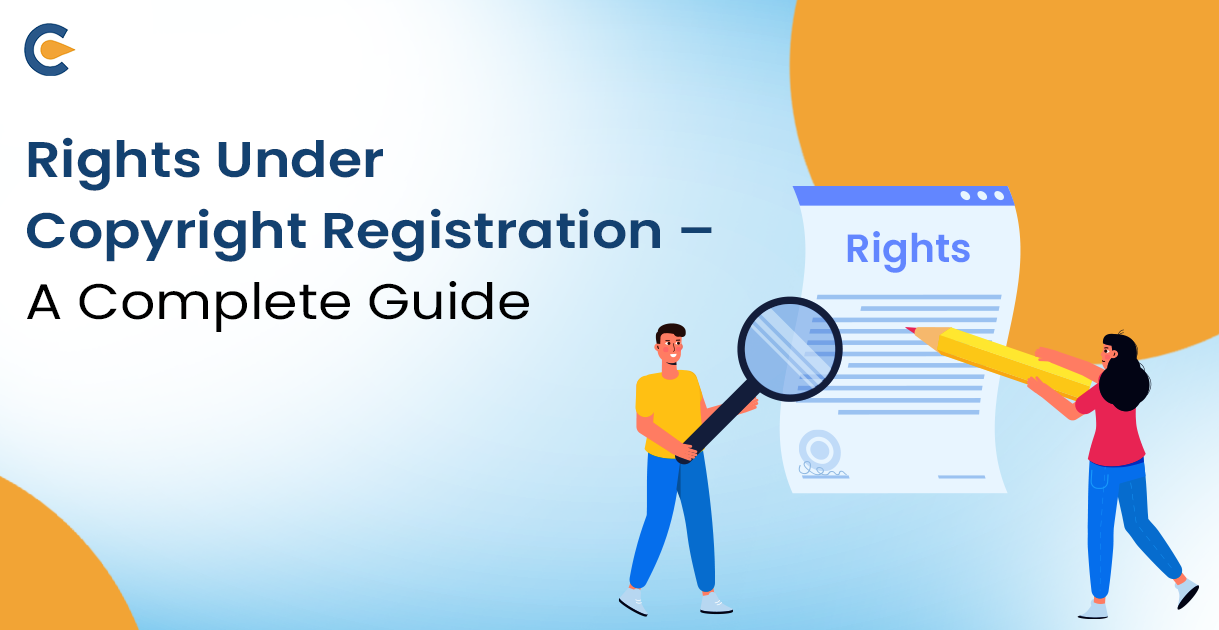Copyright disclaimers are legal statements that protect the rights of the original creators of a work, whether it be music, writing, movies, or other forms of media. These disclaimers are used to inform the public about the legal ownership of intellectual property and the permitted use of that property.
As society becomes increasingly digital and connected, copyright disclaimers have become more critical in protecting creators’ intellectual property and ensuring that their work is not stolen or misused. This paper will explore the role of copyright disclaimers in modern society and the importance of upholding these legal statements.
Copyright Disclaimer
A copyright disclaimer is a statement used by creators to declare that the material they produce is protected by copyright law and that others cannot use, reproduce or distribute their work without proper authorization. The disclaimer warns others that copying or using the creator’s work without permission violates copyright law and can result in legal action.
The purpose of a copyright disclaimer is to protect the creator’s rights, ensure that they receive credit for their work, and prevent others from profiting from or misusing their materials. The disclaimer typically includes the name of the copyright owner or creator, the date of creation, and a statement indicating that the work is protected by copyright.
In addition to declaring ownership and prohibiting unauthorized use of their work, copyright disclaimers can also include terms and conditions that outline how the work can be used or shared under certain circumstances. For example, some creators may allow their work to be used for educational or non-profit purposes as long as appropriate credit is given.
Overall, a copyright disclaimer is crucial to protecting a creator’s intellectual property rights and warns potential infringers that unauthorized use of the work is not allowed.
Copyright Act 1976
The Copyright Act of 1976 is a U.S. law that updated and revised the copyright law enacted in 1909. The law provides the legal framework for protecting and using creative works in the U.S. The Act governs the exclusive rights of authors, artists, and other creators in their original works of authorship, including literary, musical, and artistic works, as well as computer software, movies, and other forms of creative expression. The Act establishes the legal duration of copyright, outlines the criteria for establishing copyright ownership, and outlines the penalties for violating copyright law.
Copyright Disclaimer Under Section 107
Copyright disclaimer under section 107 of the Copyright Act 1976[1] is a provision that permits the “fair use” doctrine, allowing individuals to use copyrighted material without obtaining permission from the owner. Section 107 outlines the conditions under which copyrighted material can be used for criticism, comment, news reporting, teaching, scholarship, or research. Fair use allows for limited and transformative use of copyrighted material without seeking permission from the owner.
The fair use legal provision of the Copyright Act of 1976 is intended to equal the rights of copyright bearers with the rights of individuals to express themselves and engage in creative activities. It recognizes that the use of copyrighted material for specific purposes, such as criticism or commentary, may have a social benefit that outweighs the economic interests of the copyright owner. The fair use doctrine also promotes creativity and innovation by allowing artists, writers, and other creative professionals to draw upon existing works for inspiration and ideas.
However, fair use is a complex and often contentious concept, and determining whether a particular use falls under the provision is only sometimes straightforward. The four factors considered under the fair use doctrine are the objective and characteristics of the use, the type of the copyrighted thing, the quantity and substantiality of the portion used, and the result of the use on the potential market. These factors must be weighed carefully in each case, and determining whether a particular use is fair may depend on various factors, including the context of the use, the nature of the copyrighted work, and the amount of material used.
Thus, the fair use doctrine under section 107 of the Copyright Act 1976 is a necessary provision that helps the use of copyrighted material for specific purposes without obtaining permission from the owner. While it recognizes the rights of copyright owners, it also promotes creativity and innovation and recognizes the social value of criticism, commentary, and other types of expression. However, determining whether a particular use falls under the fair use provision requires careful consideration of the four factors outlined in the Copyright Act.
Types of Copyright Disclaimers in India
There are mainly two types of Copyright disclaimers in India: Fair Use and Creative Commons.
- Fair Use: Fair use is a legal principle that gives people to use someone else’s copyrighted work without permission under certain circumstances. In India, the Copyright Act 1957 provides for certain exceptions to the exclusive rights of copyright holders. These exceptions are known as fair use. Fair use includes educational purposes, research, criticism, news reporting, and judicial proceedings. Teachers can use copyrighted material for teaching purposes, students can use copyrighted material for research, and educational institutions can use copyrighted material for reports and presentations. For journalistic or news reporting purposes, copyrighted material can be used for reporting current events. For criticism/ review purposes, copyrighted material can be used for commentary and criticism. In judicial proceedings, copyrighted material can be used as evidence in court.
- Creative Commons: Creative Commons is a non-profit institution that gives licenses allowing creators to share their work with others standardized. Creative Commons license allows creators to retain copyright but still permit some uses of their work by others. There are various kinds of Creative Commons licenses, each with different terms and conditions. For example, the Attribution License allows others to use, distribute, and build upon the creator’s work, provided they give credit to the original creator. The Non-Commercial License allows others to use, distribute, and build upon the creator’s work, but only for non-commercial purposes. The Share-Alike License allows others to use, distribute, and build upon the creator’s work, but only under the same license terms.
Thus, understanding the different types of copyright disclaimers in India is essential for creators and users of copyrighted materials. While fair use provides some exceptions, Creative Commons licenses provide a standardized and flexible way for creators to permit specific uses of their work by others.
Process of Adding a Copyright Disclaimer
Here is general guidance on how to add a copyright disclaimer to a website:
- Identify where on the website you want to add the copyright disclaimer. Most commonly, it is placed in the footer section of the website.
- Write the copyright disclaimer statement. It should include the copyright symbol (©), the year of publication, and the copyright owner’s name. For example: “©2021 Your Company Name. All rights reserved.”
- Add the copyright disclaimer to the website code. If you are using a Content Management System (CMS) like WordPress, look for a section called “Footer” or “Copyright” in the settings or customization options. If you edit the code directly, look for the tag and insert the copyright disclaimer above it.
- Save the changes and publish the website. Ensure the copyright disclaimer is visible and appears correctly on all website pages.
Remember that a copyright disclaimer is just one part of protecting your content. Consider registering your copyright with the government, and including a copyright notice on each piece of content you create.
Acts and Provisions Related To Copyright Disclaimers in India
The Copyright Act of 1957 of India protects original literary, dramatic, musical, and artistic works, cinematography films, and sound recordings, and various provisions have been made to ensure that copyright owners are compensated for any unauthorized use of their works.
Following are some of the provisions related to copyright disclaimers in India:
- Section 52(1)(i) of the Copyright Act allows for fair dealing with any work for research or private study, criticism or review, or reporting current events. This provision enables using copyrighted material for limited purposes without obtaining the copyright holder’s permission.
- Section 52(1)(a) of the Copyright Act allows for reproducing any work by a teacher or pupil during instruction. This provision enables students and teachers to use copyrighted works for educational purposes without seeking permission from the copyright owner.
- Section 52(1)(m) of the Copyright Act allows for the reproduction or adaptation of any work to make a cinematograph film or sound recording. This provision enables filmmakers and music producers to use copyrighted material in their works.
- Section 52(1)(q) of the Copyright Act allows for the reproduction of any work by a person who has lawfully acquired a copy for his private or domestic use. This provision enables individuals to make copies of copyrighted works for personal use.
- Section 52(1)(o) of the Copyright Act allows for the use of any work in any judicial proceeding or any report of such proceedings. This provision enables lawyers and judges to use copyrighted works in their legal proceedings.
- Section 52(1)(p) of the Copyright Act allows for the reproduction or publication of any work in any collection comprising non-copyrighted works that does not prejudice the original copyright.
- Section 52(1)(j) of the Copyright Act allows for the adaptation, reproduction, or publication of any work for a person with a disability or their everyday use in educational institutes. This provision enables physically challenged people and students, with or without any disability, to use copyrighted material without hindrance.
Thus, the Copyright Act of India provides for various provisions to ensure that the copyright owners are adequately compensated while at the same time allowing for the fair use of copyrighted material for certain purposes. Copyright disclaimer is also widely accepted for protecting one’s work and should be used to avoid unintended infringement or piracy.
Case Laws Related to the Copyright Disclaimer under Section 107
Some of the significant case laws related to the copyright disclaimer are as follows:
- Campbell v. Acuff-Rose Music, Inc. (1994): This case was a landmark in fair use and helped to define the Four-factor fair use test. The Supreme Court held that incorporating copyrighted works into new creations without permission is a fair use of the copyrighted material.
- Texaco, Inc. v. Hosana-Tabor Evangelical Lutheran Church and School (1988): The court upheld the fair use of copyrighted materials in a religious institution’s educational activities. The court differentiated between for-profit and non-profit educational purposes, which remain essential to fair use doctrine today.
- Harper & Row, Publishers, Inc. v. Nation Enterprises (1985): This case analyzed the boundaries of fair use and its commercial use. The court held that the amount and character of the copying must be limited for fair use in a commercial context.
- Sony Corp of America v. Universal City Studios, Inc. (1984): Commonly called the “Betamax case,” the Supreme Court recognized the importance of consumers’ freedom to use copyrighted material for private use. The court held that time-shifting T.V. shows using a VCR was not a copyright infringement.
- American Geophysical Union v. Texaco Inc. (1994): In this case, the court ruled that academia or researchers’ use of copyrighted material could be limited when it contradicts the ordinary market or exacerbates the amount of copying.
Thus, the copyright disclaimer under section 107 of the Copyright Act of 1976 sets the legal framework determining the fair use of copyrighted works in the USA. The court has consistently used the four-factor test to ensure that such uses do not disrupt the market for the original copyrighted work. Understanding the boundaries and latest developments in fair use laws is essential to avoid unwanted legal complications.
Case Laws Related to the Copyright Disclaimer in India
In India, copyright law is governed by the Copyright Act of 1957. The Act recognizes and protects the rights of creators, authors, and publishers of works, such as literary, musical, dramatic, and artistic works, films, and sound recordings. To safeguard these rights, content creators and publishers often use copyright disclaimers s to indicate their ownership and rights over the content.
The courts have discussed and interpreted the concept of disclaimers under copyright law in India in various cases. Here are some notable case laws related to copyright disclaimers in India:
- ICC Development (International) Ltd. v. Arvee Enterprises, AIR 2003 SC 1561: The Supreme Court recognized the validity and importance of disclaimers in copyright law. The court held that copyright disclaimers indicate ownership and rights over the content and can be used as a defence against copyright infringement claims.
- R.G. Anand v. Deluxe Films, AIR 1978 SC 1613: In this landmark case, the Supreme Court held that the copyright disclaimer on a film is not conclusive evidence of ownership or authorship, and the court may look into other evidence to determine ownership and infringement.
- Eastern Book Company v. D.B. Modak, AIR 2008 SC 2736: In this case, the Supreme Court recognized the fair use defence under copyright law. It held that using copyrighted material for educational or research purposes may not constitute infringement if done in good faith and not for commercial gain.
- Super Cassettes Industries Ltd. v. Myspace Inc. & Anr., AIR 2011 Del 78: In this case, the Delhi High Court held that the disclaimer on a website does not absolve the website owner from liability for copyright infringement. The court held that the website owner is responsible for ensuring that the content on their website does not infringe upon the rights of others.
Thus, copyright disclaimers are essential in indicating ownership and rights over creative works. However, the courts in India have also recognized the limitations and exceptions to copyright protection, such as fair use for educational and research purposes. It is crucial for content creators and publishers to carefully consider copyright law and use disclaimers and other legal tools to protect their work.
Conclusion
In conclusion, copyright disclaimers play a vital role in protecting the rights of creators and ensuring that their intellectual property is not stolen or misused. As our world becomes more digital and connected, we must uphold the legal statements protecting our creative works.
Through copyright disclaimers, creators can feel confident that their work is being used in the intended way, and the public can better understand the ownership and permitted use of intellectual property. As such, we must recognize the importance of copyright disclaimers and work together to uphold their legal validity.
Read Our Article: Copyright Disclaimer Under Section 107











